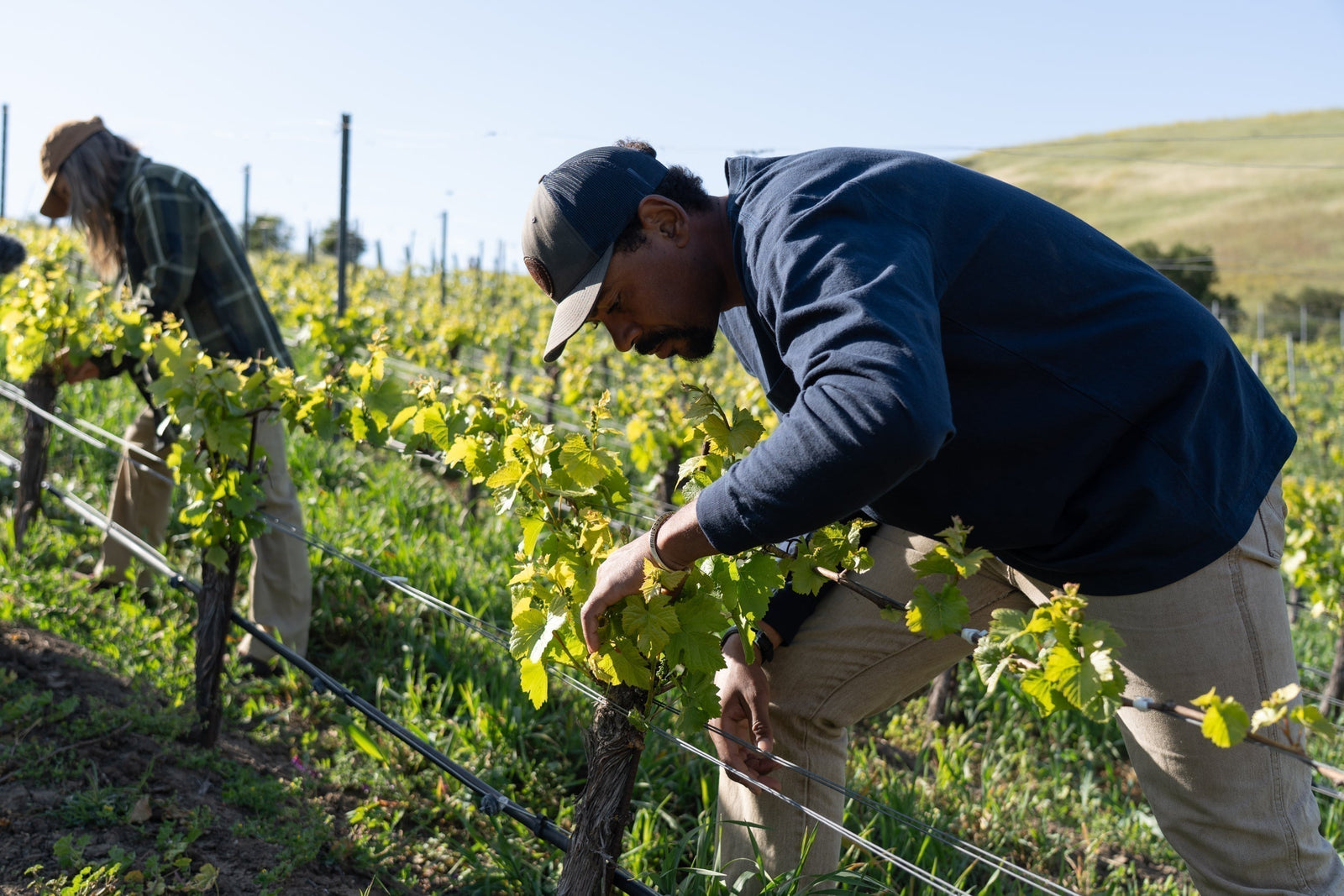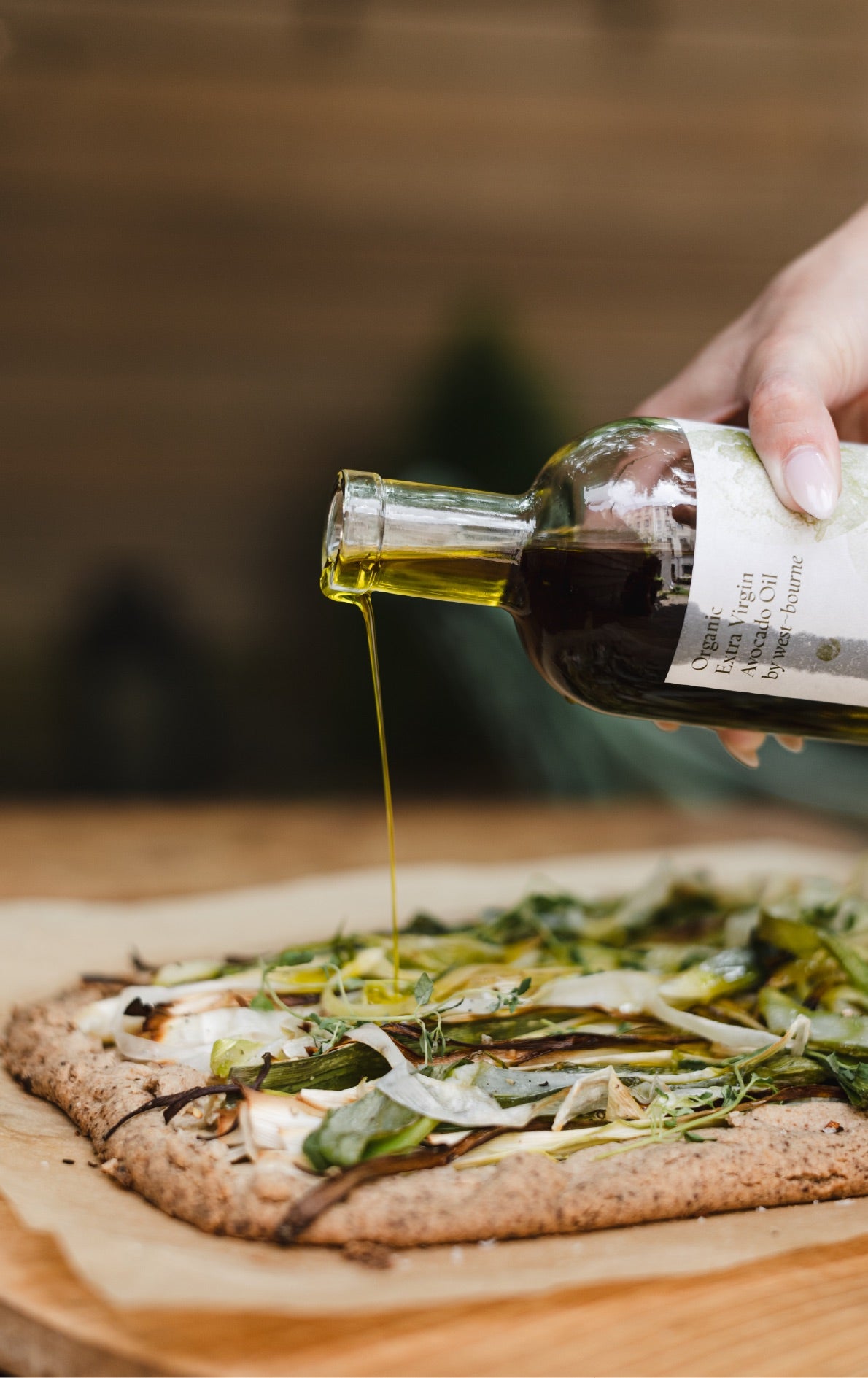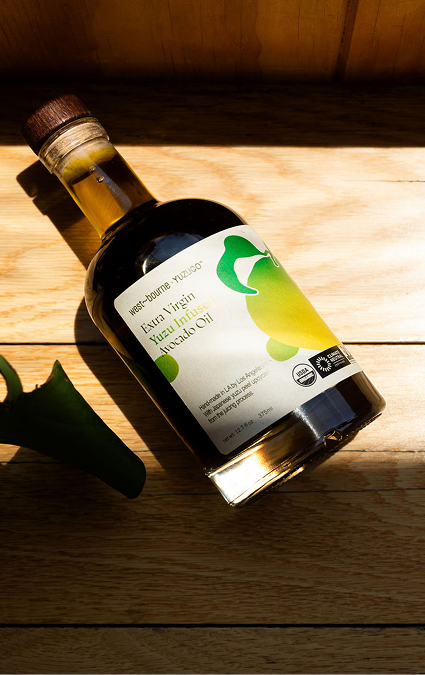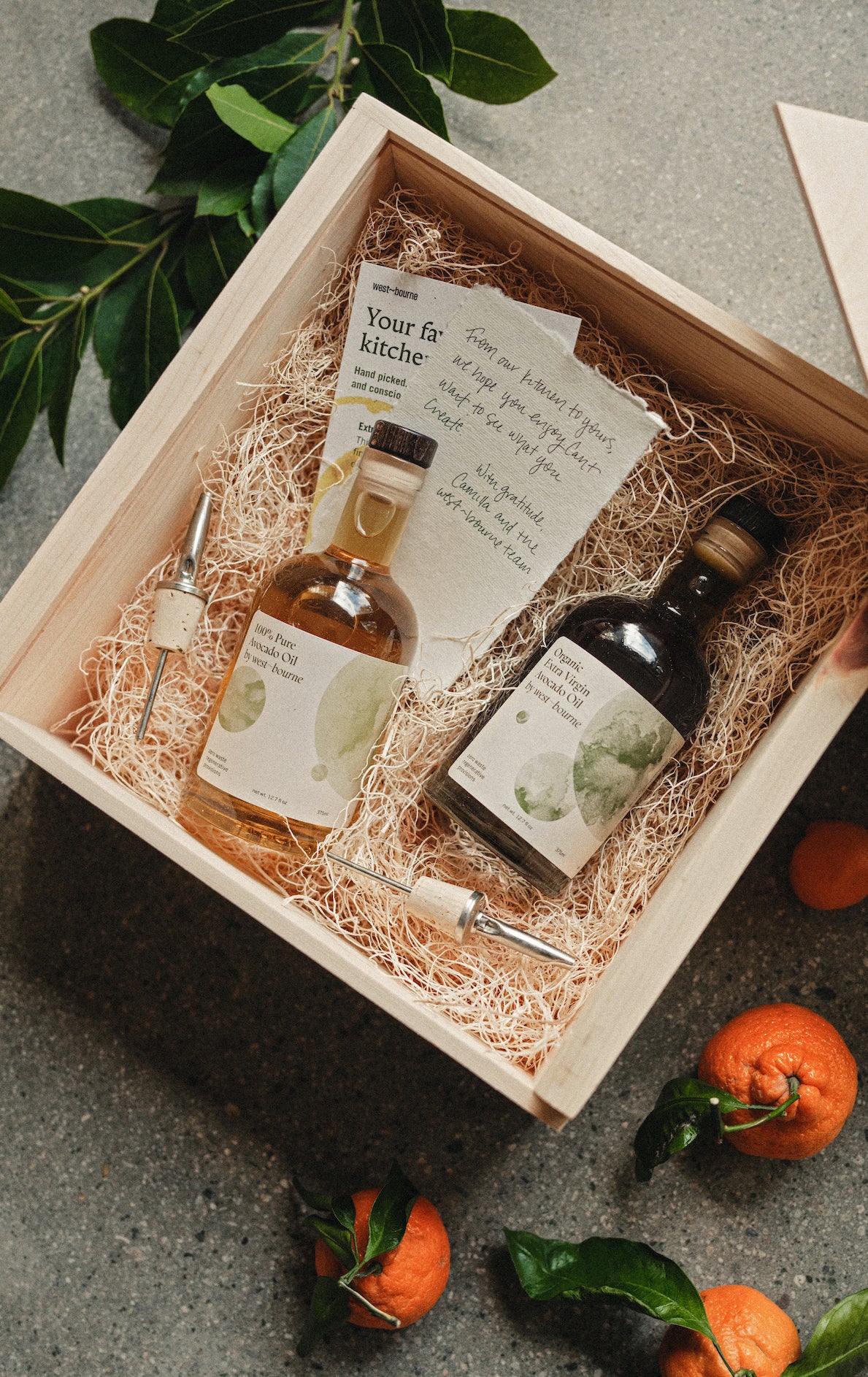Main Meal: Jesse Smith on Land Stewardship

Jesse Smith holds the role of Director of Land Stewardship at White Buffalo Land Trust, a nonprofit organization focused on regenerative agriculture and ecological research initiatives, among others. Located about an hour north of Santa Barbara at the crest of the Santa Ynez watershed, Jalama Canyon Ranch is a 1,000-acre living laboratory of regenerative agriculture. This is where Jesse focuses his work in both agricultural system design and community engagement, working with leaders to broaden and deepen the positive impact of regenerative agriculture. As such an expert, Jesse is the perfect resource in sharing approachable, actionable tips for us all while sharing more about his work, both at White Buffalo Land Trust, and at home with his own family.
What is your background and how did it lead you to White Buffalo Land Trust?
I grew up in Santa Barbara surrounded by the natural beauty of the central coast as well as the complexities of a food system that felt increasingly disconnected from the land. My path started in communications and product design, initially working as a graphic designer. Through the creative arts, I eventually found my way to food and to farming by way of agricultural system design. I began to see how land health connects directly to human health and to the resilience of our communities and cultures. This led to co-founding Regenerative Capital, a mission-driven enterprise rooted in agricultural production, regional food distribution, and ecosystem-based design consulting. There, I became focused on building bioregional food systems grounded in ecological function and cultural relevance.
That experience deepened my understanding of how regenerative principles can be applied across the full value chain—from soil to market—and laid the groundwork for my role at White Buffalo Land Trust. In 2018, I partnered with Steve Finkel, founder of White Buffalo Land Trust, to become the Director of Land Stewardship and the first employee of the organization. Together, we set out to scale regenerative agriculture through a whole-systems approach: practicing land stewardship across diverse agricultural enterprises, measuring ecological outcomes, supporting research, educating producers and communities, and developing regenerative products that connect people to place and bridge soil to shelf.

What does being a steward of the land mean to you?
To me, stewardship is about relationship, not ownership. It's about being in service to the land and place, and to the generations—human and non-human—that will inherit it. It's a reciprocal responsibility: listening to the land, learning from it, and responding in ways that regenerate life rather than extract from it. Stewardship is not just what we do in the field, it's how we live, build community, and make decisions that ripple far beyond ourselves. Stewardship is reflected in the food we grow and eat, the partnerships we build, and the values we carry into every aspect of our lives.
What does an average day at White Buffalo Land Trust look like for you?
This is no real average day, and I think that's part of the beauty of this work. Some days I'm walking the land at Jalama Canyon Ranch, managing livestock movements across the landscape, checking on the health of our orchards and vineyards, or collaborating with the team on monitoring and planning. Other days are filled with meetings, storytelling, and strategy—working with partners, policymakers, or brands to advance the regenerative movement or giving input on projects like our regenerative food brand, Figure Ate, or The Almond Project. The throughline is always about connection: to the land, to people, and to purpose.

Can you share more about the undertakings at the Jalama Canyon Ranch regarding climate-appropriate cropping systems? What are some of the lessons seen at this living laboratory that you think could be adopted—and adapted—on a smaller, individual scale?
At Jalama Canyon Ranch, we're building a mosaic of cropping systems tailored to our Mediterranean climate—from climate-appropriate perennial crops like elderberries and agave to silvopasture systems which focus on livestock, trees, and grasses. One major takeaway is that complexity fosters resilience. Take our vineyards, for example, rather than relying on chemical herbicides and pesticides, we focus on building ecological resilience through diversity: a living cover of plants between the vines, hedgerows alive with pollinators, sheep and goats rotating through the rows in the early spring, and raptor perches that invite nature's own pest control. But you don't need 1,000 acres to begin. Anyone with a backyard, a balcony, or even a windowsill can make small, meaningful choices. Native plants adapted to your local climate require less water and maintenance, while providing food and habitat for birds, bees, and butterflies. Perennial herbs like rosemary, thyme, and sage can offer fresh harvests year after year, while supporting healthy soils and beneficial insects with their deep roots and low maintenance growth. Compost what you can, and you're already helping to close the nutrient loop and return life to the soil.
Observing your ecosystem and adapting your practices accordingly is something anyone can do. For those looking to deepen their understanding, our hands-on courses offer a chance to learn these skills in the field, guided by experienced land stewards.

In what ways do you integrate land stewardship into your own life, at home and in the kitchen?
Home life is an extension of our stewardship. We cook with ingredients that we either grow ourselves or source locally and seasonally. Bringing regeneratively-grown foods into our kitchen is essential—from the persimmon vinegar and biltong we make through Figure Ate, to the regenerative wine we produce each year with Sandhi wines, to our like-minded brands with shared values such as west~bourne.
We compost, use water-wise gardening practices like mulching and rainwater capture, and treat our household as a learning lab—giving our kids the opportunity to engage with food, water, and waste in intentional, hands-on ways. The kitchen becomes a space where our values are practiced daily, transforming what we harvest into nourishment, connection, and culture.
To that end, are there any habits that you have shifted in your own life with a focus toward sustainability?
Absolutely. We've redefined what wealth and value is in our lives: slowing down to cook meals, being intentional about the products we surround ourselves with, and growing food and medicine and beauty in our garden are all activities that have brought health and well-being to our family in many ways. We've invested more in relationships than consumption. We've also reimagined travel as a commitment to lifelong learning and cultural immersion. None of it is about perfection: it's about alignment and intention.

Are there a few key actionable efforts someone could make to influence local and global policy toward regenerative practices?
One of the most powerful things individuals can do is tell their story and show up in their community whether through school boards, food policy councils, or community gardens. Support land stewards. Visit their properties. Vote with your dollar, but also with your voice. Ask the places you shop, the restaurants you frequent, the brands you support: "How are you contributing to regeneration?" Start conversations that cascade outward.
Water is a topic at the forefront of many minds in California, do you have any advice on how to address water shortages and drought as a consumer?
Think of water as a community asset, not just a personal utility. Harvest rainwater, mulch your soil, and plant perennials. Eat foods that are grown regeneratively and locally, since food production accounts for the majority of our water use. But beyond sourcing locally, it's equally important to prioritize crops that are truly suited to your regional climate.
This is one of the reasons we created our persimmon vinegar through Figure Ate. Persimmons are a drought-resilient, climate-appropriate crop for our region, requiring significantly less irrigation than many common agricultural staples. By working with what the land naturally supports, we can produce delicious, nutrient-dense foods while reducing strain on local ecosystems. And perhaps most importantly, we can support the restoration of healthy soils and landscapes: our most effective infrastructure for water retention and climate resilience.
We often speak about working at a watershed scale. Meaning, we look beyond individual properties or parcels of land to consider the health of the entire water system—to rivers, creeks, groundwater, and rainfall—across a shared region. In that context, water isn't just a personal resource; it's a public benefit that connects us all. We are both caretakers and beneficiaries of the water cycle, and our actions—whether upstream or downstream—ripple through the entire system. In California and other Mediterranean eco-regions, water is our most precious resource. We have abundant sun and fertile soil, but water remains the limiting factor for our agricultural future. If we can repair the water cycle, improvements in soil health, biodiversity, and human well being will follow.

In what ways can an individual contribute positively to regenerative agriculture practices, particularly for those living in urban or suburban environments?
Regeneration starts with observation. Whether you're in a high-rise apartment building or a suburban lot, you can compost, grow herbs, support farmers markets, seek out regenerative-certified products, and built or join community gardens. It's also about asking better questions—of our cities, our grocery stores, our schools. Urban environments hold huge potential to model regenerative principles if we create a cultural collective will to do so. Individuals can also make an outsized impact through their professional roles whether healthcare providers, financial professionals, policy advisors, or educators. The choices we make about where and how to direct resources can have large-scale implications for our ecological systems and the people who steward them.
For more about Jesse's work, visit White Buffalo Land Trust, Figure Ate, and The Almond Project.







